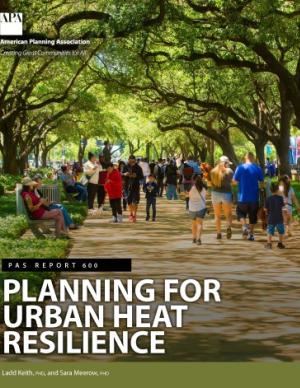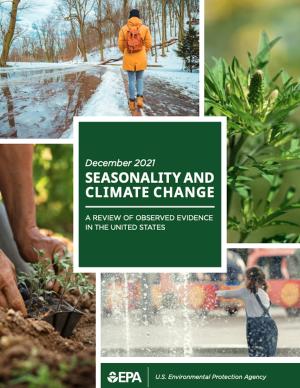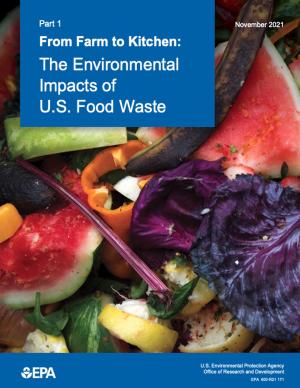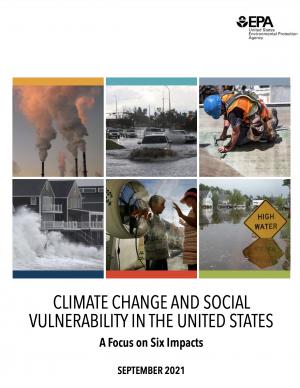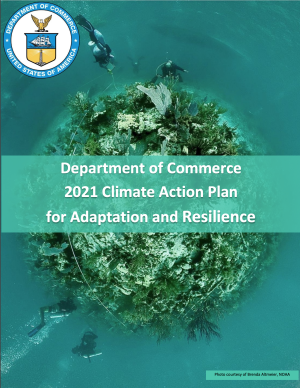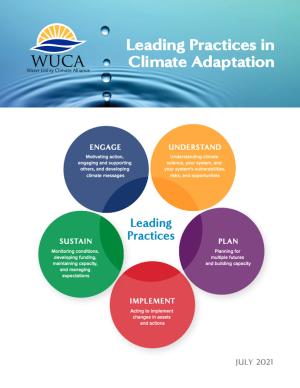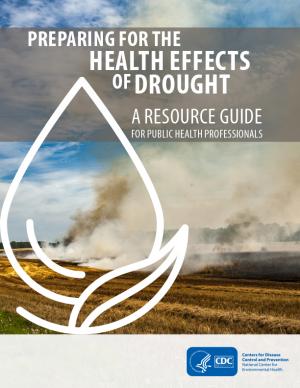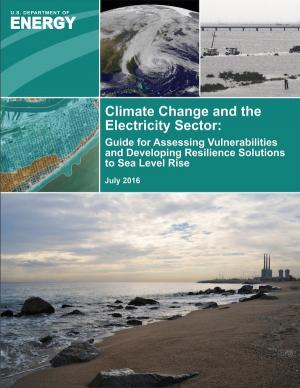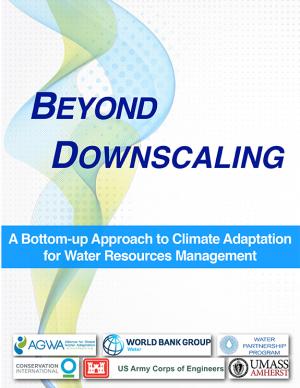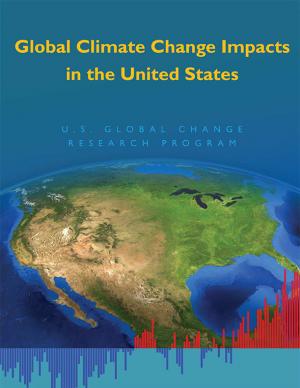Access a range of climate-related reports issued by government agencies and scientific organizations. Browse the reports listed below, or filter by scope, content, or focus in the boxes above. To expand your results, click the Clear Filters link.
Heat is the number one weather-related killer in the United States. As average global temperatures continue to rise, the threats of both extreme heat events and chronic heat are projected to increase.
Heat disproportionately affects marginalized residents and those who face systematic inequities such as workplace safety, housing quality, energy affordability, transportation reliability, and healthcare access. But planning can shape heat risk. Planners will be key practitioners in helping their communities achieve greater heat resiliency by proactively managing and mitigating heat across the many systems and sectors it affects.
PAS Report 600 provides holistic guidance to help practitioners increase urban heat resilience equitably in the communities they serve. It provides an in-depth overview of the contributors to urban heat and equity implications, and it lays out an urban heat resilience framework and collection of strategies to help planners mitigate and manage heat across a variety of plans, policies, and actions.
This is the FY22 edition of the U.S. Gllobal Change Research Program's annual report to Congress mandated by the the Global Change Research Act. The report provides an overview of the Program’s progress in delivering on its strategic goals as well as a summary of agency expenditures under USGCRP’s budget crosscut.
The Working Group II contribution to the IPCC Sixth Assessment Report assesses the impacts of climate change, looking at ecosystems, biodiversity, and human communities at global and regional levels. It also reviews vulnerabilities and the capacities and limits of the natural world and human societies to adapt to climate change.
This Environmental Protection Agency report discusses how climate change affects the timing and nature of seasonal events, summarizes changes that have been observed in the United States, and describes the implications of these changes. The main report discusses the science behind seasonal events and the ways in which climate change can influence seasonal trends. It uses many years of observations from EPA’s climate change indicators to explore the interconnectedness of seasonal changes. The technical appendix describes EPA's evaluation approach and criteria for selecting indicators, and it also provides documentation of sources and methods for the indicators featured in this report.
EPA prepared the report, From Farm to Kitchen: The Environmental Impacts of U.S. Food Waste, to inform domestic policymakers, researchers, and the public about the environmental footprint of food loss and waste in the U.S. and the environmental benefits that can be achieved by reducing U.S. food loss and waste. It focuses primarily on five inputs to the U.S. cradle-to-consumer food supply chain -- agricultural land use, water use, application of pesticides and fertilizers, and energy use -- plus one environmental impact -- green house gas emissions.
This report provides estimates of the environmental footprint of current levels of food loss and waste to assist stakeholders in clearly communicating the significance; decision-making among competing environmental priorities; and designing tailored reduction strategies that maximize environmental benefits. The report also identifies key knowledge gaps where new research could improve our understanding of U.S. food loss and waste and help shape successful strategies to reduce its environmental impact.
Climate change affects all Americans—regardless of socioeconomic status—and many impacts are projected to worsen. But individuals will not equally experience these changes. This report improves our understanding of the degree to which four socially vulnerable populations—defined based on income, educational attainment, race and ethnicity, and age—may be more exposed to the highest impacts of climate change. Understanding the comparative risks to vulnerable populations is critical for developing effective and equitable strategies for responding to climate change.
Executive Order 14008, Tackling the Climate Crisis at Home and Abroad, requires that each Federal agency develop a Climate Action Plan for Adaptation and Resilience. This plan highlights the important role the Department of Commerce plays in advancing climate adaptation and resilience. The actions captured in this Plan, as well as the broader work of the Department to address the climate crisis, support the Department’s mission to create the conditions for economic growth and opportunity.
Sections in this report include:
- Why Is Climate Adaptation & Resilience Planning Important for the Department of Commerce?
- Efforts to Enhance Climate Literacy into the Management Workforce
- Climate Vulnerability Assessment
- Actions to Enhance Climate Adaptation and Resilience with Climate-Ready Sites and Facilities
- Actions to Enhance Climate Adaptation and Resilience with Climate-Ready Products and Services
- Priority Climate Adaptation and Resilience Actions
A Coastal Resilience Center research team, led by Dr. Cassandra R. Davis of the University of North Carolina at Chapel Hill, has released a report that explores the disproportionate impacts of federal mitigation assistance on socially marginalized groups and under-resourced neighborhoods. The purpose of the report is to improve mitigation efforts by addressing equity in emergency management, ultimately supporting the creation of national policy for federal agencies including FEMA, the National Oceanic and Atmospheric Administration, and others.
This collection of leading practices in climate adaptation covers a suite of climate adaptation actions and is intended to broadly promote collaborative learning. Each practice in the collection is explained and supported by concrete examples. These practices are drawn from WUCA work products and WUCA members' experiences, and, when possible, connected to relevant resources and related efforts. Most of these practices are appropriate for water utilities of any size, as well as other sectors interested in climate adaptation.
The current practices and where they are placed within the five essential climate adaptation action areas:
- Engage
- Understand
- Plan
- Implement
- Sustain
It is important to note that these action areas and leading practices are not prioritized. Instead, the most useful practices depend on the individual organization's needs and priorities.
Each region of the United States experiences climate change and its impacts on health differently, due to the regions’ location-specific climate exposures and unique societal and demographic characteristics. This document describes the various health impacts climate change will have on different regions of the United States as outlined in the Fourth National Climate Assessment (NCA4), actions taken by the CDC Climate and Health Program’s health department partners to prepare for and respond to climate change in their communities, and relevant tools and resources.
The Beloved Community is a vision for our future where all people share equally in the wealth and bounty of the earth, where we protect its abundance, diversity, and beauty for future generations. In this vision of liberation, racism, exploitation, and domination are replaced by democracy, cooperation, interdependence, and love. To get there, we pursue transformative, systems-change solutions. What do we mean by this? The root causes of the problems our communities face—like climate change, racism, and economic inequality—are all deeply connected. Since the problems are connected, so are the solutions. The purpose of this toolkit is to put us on the path toward achieving this vision. Through the context of building equity and resilience into climate adaptation planning, we introduce strategies to transform our communities and, by extension, society. Our ultimate goal is to create lasting and systemic change. At the same time, we recognize the urgency of the issues our communities face and the need to take action now. That is why we pursue change at every scale—from policy changes to community-based projects—to institute the transformative change we need to uphold our vision of the beloved community.
The guidance provided by this report is designed to help all communities create disaster debris management plans. It assists communities in planning for natural disaster debris before disasters—such as hurricanes, earthquakes, tornadoes, volcanoes, floods, wildfires, and winter storms—occur by providing useful, relevant information intended to increase community preparedness and resiliency. The report includes recommended components of a debris management plan, suggested management options for various natural disaster debris streams, a collection of case studies that highlights how several communities prepared for and managed debris generated by recent natural disasters, resources to consult in planning for natural disasters, and the EPA’s recommended pre-incident planning process to help prepare communities for effective disaster debris management.
This guide contains five modules that provide best practices on conducting vulnerability assessments, collaboration among stakeholders, communicating drought preparedness and response strategies, and where to find (and how to use) data on drought. The guide also includes a list of valuable resources for public health professionals. The authors of the guide also developed and included two attractive, user-friendly handouts that can be easily customized and reproduced for community outreach.
This report (avialable here) describes a conceptual model of climate resilience, codified as an index. The Climate Resilience Screening Index (CRSI) is designed to be sensitive to changes in the natural environment, built environment, governance, and social structure and vulnerability or risk to climate events. CRSI has been used to develop an index score for climate resilience at the county level (scalable both upward and downward spatially). The index represents both the vulnerability of the entity to multiple climate events and the potential recoverability of these entities from climate events.
The approach uses five domains and 20 indicators related to the domains. CRSI characterizes holistic climate resilience throughout the US at the county level (2000-2015); ascertains the relationships among those domains and indicators; and, provide information regarding how that resilience score is constructed and the actions a community/county can take to improve their climate resilience.
This report provides guidance for evaluating how sea level rise and storm surge hazards may impact the ability to provide electricity service, and for identifying and implementing solutions to enhance resilience. The document includes examples of various tools, methods, and information resources that can assist in resiliency planning. In addition, climate resilience challenges and opportunities for different types of generation, transmission, and distribution assets are identified. It also includes general methods on how to estimate the costs and benefits of resilience measures.
Climate change adds uncertainty to already complex global water challenges. Though no standard method has been adopted yet by the World Bank, common practice uses downscaled precipitation and temperature projections from Global Climate Models (GCMs) as input to hydrologic models. While this has been useful in some applications, they often give too wide a dispersion of readings to provide useful guidance for site-specific water resources management and infrastructure planning and design. Rather than design for an uncertain situation selected a priori, the so-called “bottom-up” approaches explore the sensitivity of a chosen project to the effects of uncertainties caused by climate change. Supported by the Water Partnership Program, this book summarizes alternatives explored by a group of organizations that belong to the Alliance for Global Water Adaptation (AGWA), to provide practitioners with the tools to adapt to the realities of climate change by following a decision-making process that incorporates bottom-up thinking.
The National Climate Assessment assesses the science of climate change and its impacts across the United States, now and throughout this century. It documents climate change-related impacts and responses for various sectors and regions, with the goal of better informing public and private decision making at all levels.
The assessment draws from a large body of scientific peer-reviewed research, technical input reports, and other publicly available sources; all sources meet the standards of the Information Quality Act. The report was extensively reviewed by the public and experts, including a panel of the National Academy of Sciences, the 13 federal agencies of the U.S. Global Change Research Program, and the Federal Committee on Environment, Natural Resources, and Sustainability.
This report is the Second National Climate Assessment, summarizing the science and impacts of climate change on the United States. The report discusses climate-related impacts for various societal and environmental sectors and regions across the nation. It is an authoritative scientific report written in plain language, with the goal of better informing public and private decision making at all levels.

